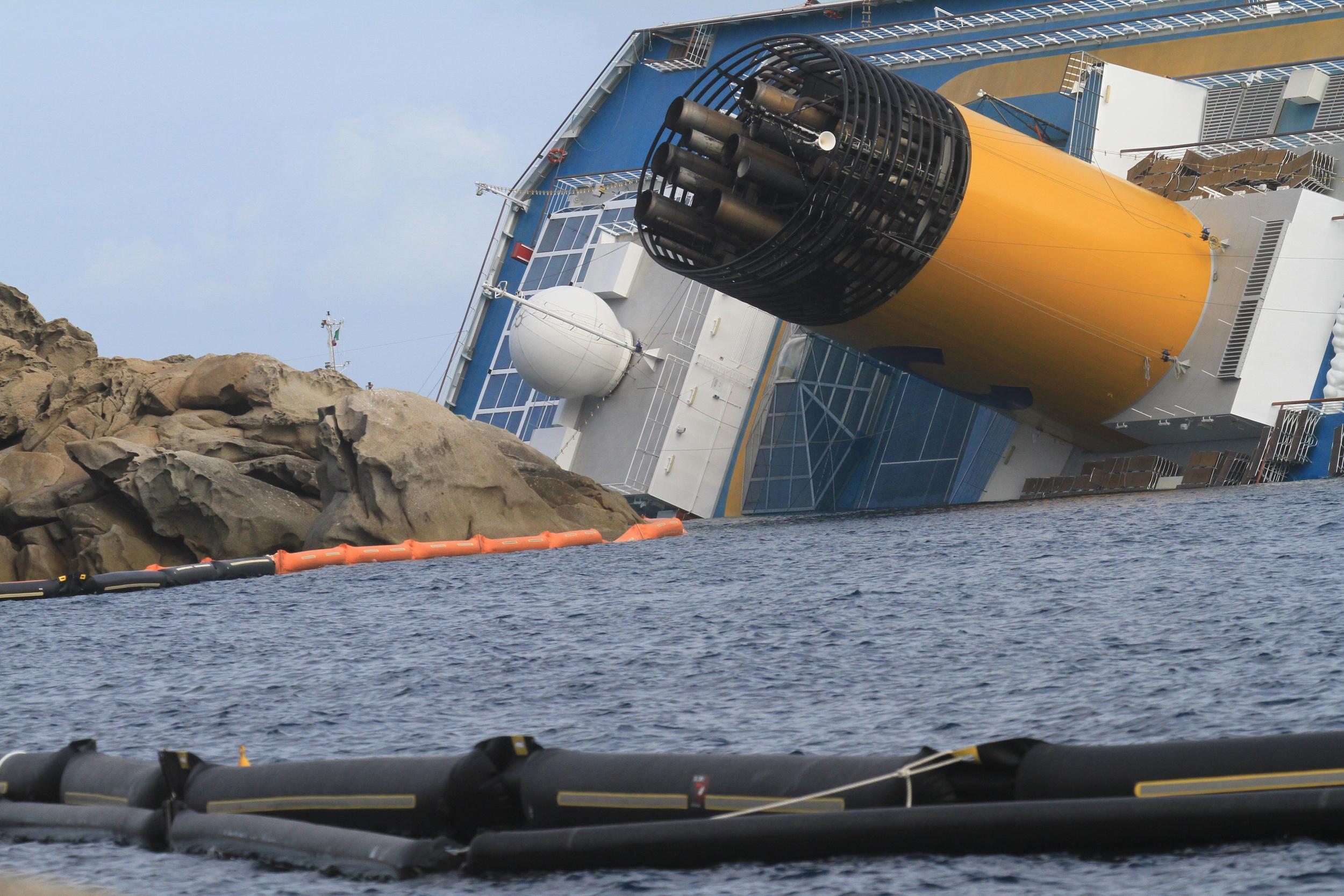A year following the disastrous “bow” of Captain Francesco Schettino (on January 13, 2012), the cruise ship is still there, resting on its side just yards away from the coast of Giglio island. Almost as if in-wait.
Not unlike some broken toy abandoned by a child now back home after summer vacation, the toy just a fading memory. On board there was music, dancing, 4D movies and the casino. Now, the only sound is that of the waves breaking against the hull.
This mere semblance of what was once the Costa Concordia will remain there, facing Punta Gabbianara, at least until next September because the salvage operation is a complex one requiring time and the risk of provoking an ecological disaster is high. A disaster that, until now, has been avoided, at least according to initial results of the environmental study (initiated in October and which will continue until the wreck is removed) undertaken by the University of Siena.
The study which Panorama offers a preview of here. “We are talking about results in the embryonic stage, but significant nonetheless,” explains Silvano Focardi, coordinator of the study commissioned by the Tuscany region. “In the two areas near the ship, outside the prohibited access and worksite zones, the impact was very low, as can be seen from the excellent condition of the species being utilized as bio-indicators: sea urchins, red mullet and rock fish.
We have not encountered signs of chemical stress.” For example? In fish with a presence of neurotoxic substances in brain matter, the transmission of neural impulses undergoes alteration. In the lab tests performed, there is no trace of this type of disturbance.
Briefly stated, the ecological catastrophe feared by environmental groups has been avoided. And the other two monitoring processes instituted by the Tuscany Environmental Protection Agency (ARPAT) and the Institute for Environmental Protection and Research (ISPRA) suggest the same conclusion.
The former has been monitoring water quality since the day of the shipwreck and in the most recent tests in December there is only “a slight presence of surface-active agents [contained in soaps and detergents present on-board?”eds.] and aromatic solvents”, while toxicity tests are negative.
ISPRA utilizes bio-monitoring methods, in particular involving bacteria, algae and echinoderms, in order to verify any problems caused by contaminants. Once again, test results confirm the healthy status of the marine habitat and effectiveness of the work carried out by the 400 technicians involved in the operations.
So, can we shelve the threat of this risk and maybe cross destruction of a protected habitat off the list of charges against Captain Schettino (a charge which, alone, carries with it a sentence of 18 months in jail)? It’s too early to tell.
For the moment, no environmental damage has been detected, except, of course, the devastation of the sea floor where the Concordia?”293 meters long and weighing 114,500 tons?”ran aground. “Around Giglio island, the sea bed is filled with cystoseira, posidonia, sea fans, sponges, mollusks, shellfish, coelenterates and many other organisms,” warns Francesco Cinelli, spokesman for the Marevivo technical committee and ecology professor at the University of Pisa.
“The longer the ship remains sitting on the rock bed, the more serious the damage will become and the longer it will take for the ecosystem to recover.”
Now, attention is focused on removing the wreck and transporting it to the port of Piombino for demolition which, not by chance, has been delayed almost a year due to the slings and arrows of Giglio’s inhabitants and protests from Enrico Rossi, the concerned president of the Tuscany region. Although all fuel has been emptied, the cruise ship is filled with paint, solvents, batteries, lubricants, detergents, pool chlorination products, phthalates, flame retardants and metals of all kinds.
Not to mention the huge amount of decomposing food products to feed the 4,229 people on board, all partially dissolved in the water stagnating within the hull. It doesn’t take a degree in environmental sciences to understand that, once the wreck has been removed, the risk that this material will leak out into the sea is very high. “That will be a critical moment in which the greatest attention must be paid to monitoring in order to have a true assessment of the impact on the marine ecosystem,” Focardi concludes.

